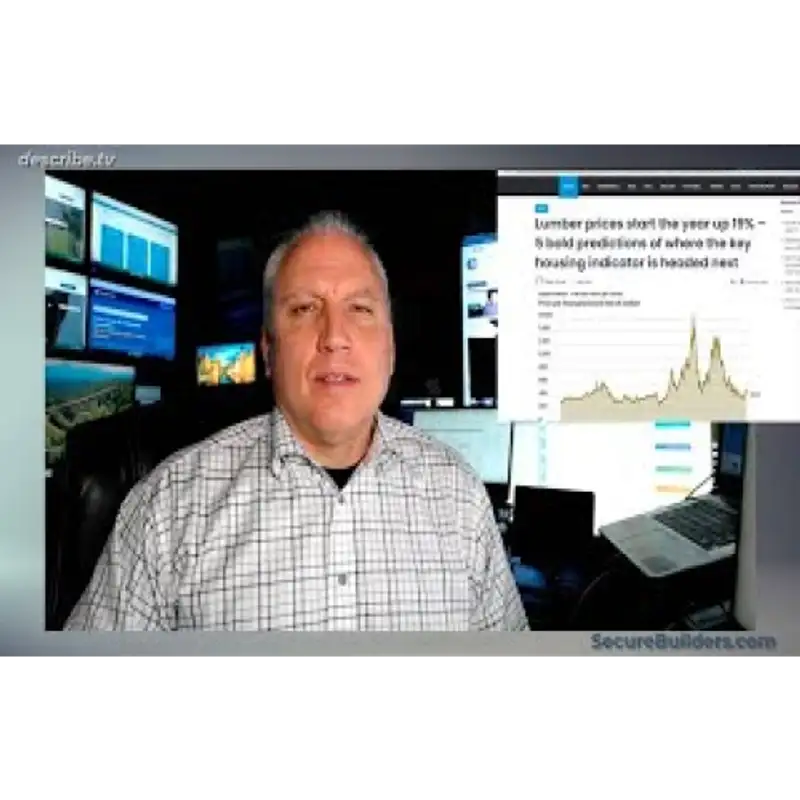Timber Trends: Are Lumber Prices Rising or Falling?
Download MP3Wow, what a run there's been on lumber prices over the last two years! There's been more volatility and ups and downs in that market than a broken roller coaster. It started out in the $300 to $400 per thousand board feet range, spiked up to $1,500, came back down over a thousand a year or so ago, and now it's back down in the $300 to $400 range. Now it’s spiked up a little, getting closer to $500. That’s up 20%, but it’s up 20% from a depressed value.
What’s going to happen with lumber prices going forward? Well, there’s a lot of speculation on that. A lot of it has to do with the housing market. The housing market affecting lumber prices has nothing to do with the price of houses; it has to do with the volume of construction. The volume of construction comes from the volume of sales. Right now, the volume of sales for real estate is very, very low. Even though prices have spiked up and interest rates have come down a little bit, there’s very little activity. It’s kind of like a stalemate—a blocked market for real estate. Nobody’s wanting to buy houses. A lot of new home construction developments are stopping construction, and even contracts are being canceled by buyers.
This is going to affect lumber prices going forward. Let’s take a look at some of the other factors that might affect lumber prices. The first is the housing market. The housing market itself is going to continue to be at a lower range of sales, mostly because of the price point. In order to construct a new home based on interest rates, construction costs, labor costs, and permit costs, it’s going to be at the higher end of the affordability range. So, they’re not going to be churning out large volumes of homes, even though the market needs homes to satisfy demand and affordable housing.
Number two is the demand on the mills. The mills aren’t going to have as much demand as they had before and may lower production volume. They’re also still running into trouble getting workforce at these mills. Another factor is interest rates. The interest rate environment at the 2%, 3%, or 4% level is over for a long time. It’s going to be at the 5%, 6%, or even 7% range for many years to come, and that’s going to affect the volume. These lumber mills may not have the volume of throughput needed to support that kind of production level. That may put a limit on how much lower lumber prices can go.
If you’re not producing much volume, even if the demand is lower, the price could stabilize. In fact, the mills really need prices to be at a certain level to make it worthwhile to produce lumber, and the logging companies need prices at a certain level to harvest timber. If you’re in the $300 to $400 range, a lot of the mills can’t even operate profitably, and the logging firms really don’t have an incentive to cut down any more trees. Once you get back up into the $450 to $500 range, it kind of spurs some of that production. But now, you run into problems with workforce. A lot of the mills lost their workforce in 2019 and 2020, and it’s not easy to get that back.
If you’re a builder or a contractor, what have you seen in your market for lumber prices? Have they come back down with the wholesale amount at $400 per thousand board feet? Are your lumber yard prices back to where they were, or are they still remaining high? That’s going to give you a good indication of where that wholesale-to-resale price point and margin fall into play. Are you seeing different types of project mixes? Are you seeing more new construction or remodels? Are you seeing more speculative homes or additions?
That’s going to also affect the throughput on lumber volume. New home construction takes a lot more lumber than an addition. An addition might take 30% or 40% of a lumber package of a new construction project, and that’s going to affect the volume of lumber coming out of these mills.
The price of lumber was on a roller coaster. That volatility is probably over for now. But where it lands and where it falls as a final price—will it be in the $300 to $400 range? $500 to $600 range? Probably not much higher. At one point, we thought it might land at $600 or $700. Over the next couple of years, it’ll probably trade between $450 and $580, somewhere in that range. What that does for the retail price will be of interest. Let us know in the comments what you’re seeing at your lumber yards and mills.

